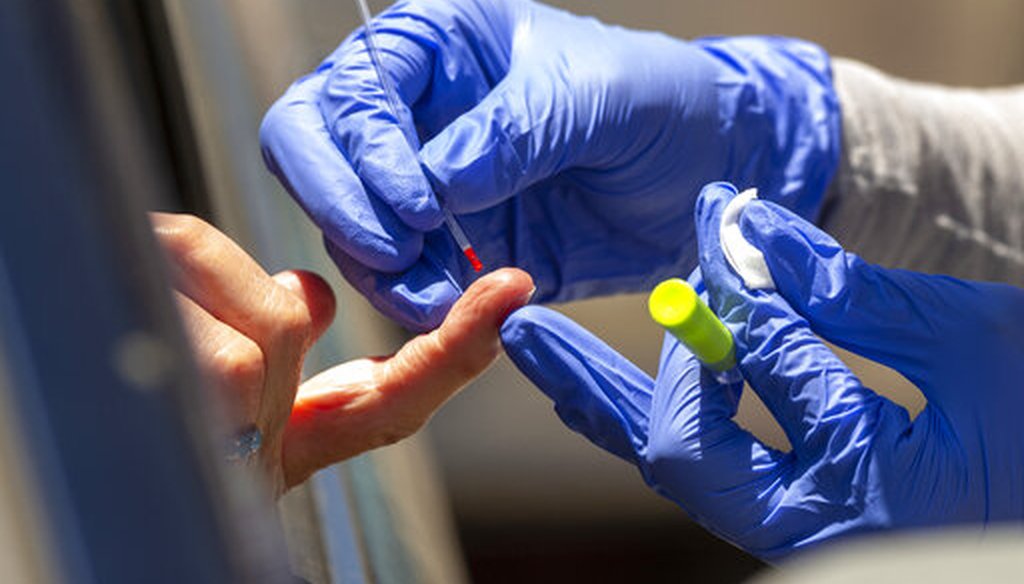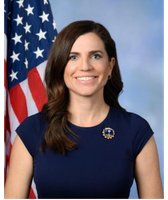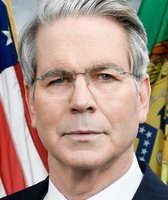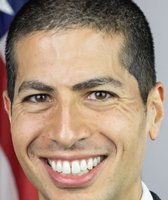Get PolitiFact in your inbox.

A health worker takes a blood sample for a COVID-19 antibody test in Los Angeles on May 20, 2020. (AP)
If Your Time is short
• Herd immunity occurs when a disease infects enough members of a community that the infection can’t be transmitted effectively, meaning the spread slows to virtually zero.
• The novel coronavirus is substantially less infectious than fast-spreading infections like measles, but it’s still infectious enough to spread almost unchecked if no mitigating efforts are made.
• So far, about 20% of New York City residents have been infected by the coronavirus, which is well below the estimated 60% to 70% scientists say is needed to achieve herd immunity.
• Since increasing this percentage of infected people would produce a lot of collateral illness and death, the only practical way of achieving herd immunity in the short term is to produce a safe and effective vaccine.
As the world waits for scientists to develop a safe and effective vaccine against the novel coronavirus, some have asked if "herd immunity" could play a part in reducing the virus’ spread.
Generally, scientists say that herd immunity does have a role to play in curbing the virus prior to the development of a vaccine, but probably only to a limited degree. Trying to actively build up herd immunity before a vaccine would contribute to more cases of COVID-19, and likely more deaths.
Here’s what we’ve been able to glean about herd immunity.
How does herd immunity work?
Typically, an infection prompts the body’s immune system to produce antibodies, which are proteins that circulate in the blood and help fight off an infection.
People who have battled the coronavirus and have recovered, or people who had been exposed but whose infection was so mild that they didn’t notice they were sick, should both have antibodies specific to the coronavirus. Once a vaccine is developed, people who have been vaccinated should also have antibodies to fight off an infection.
Someone with antibodies to the coronavirus should have a degree of immunity, although researchers are still trying to determine exactly how strong that protection will be and how long it will last.
Having antibodies means that an individual can go out into the wider community without fear of getting sick themselves, at least for a period of time. It also means that these individuals cannot serve as a vector to spread the virus from an infected person to someone who’s not infected.
All told, the more people who have antibodies to an infection, the less rapidly the infection can spread through the community. This is especially important with the coronavirus, because an infected person is able to spread the virus for several days before even knowing they’ve been infected.
"If 80% of a population is immune to a virus, four out of every five people who encounter someone with the disease won’t get sick and won’t spread the disease any further," wrote Gypsyamber D’Souza and David Dowdy of Johns Hopkins University’s Bloomberg School of Public Health. "In this way, the spread of infectious diseases is kept under control."
What is the threshold percentage for achieving herd immunity?
The threshold to reach herd immunity varies by the type of infection.
The standard measure of infectiousness is called R0, which is pronounced "r-naught." It refers to the number of other people, on average, that an infected individual will pass the infection on to in the absence of specific countermeasures. A higher R0 figure means more infectiousness.
In general, health officials want to implement policies, such as social distancing, to reduce the R0 figure below 1, because that will tend to produce a declining number of new cases over time. Eventually, if R0 falls far enough below 1, the virus runs out of new targets to infect and the epidemic will eventually peter out.
Measles, one of the most easy infections to pass from person to person, has an estimated R0 of 15. Though the coronavirus is new and still requires more study, estimates suggest that its R0 is somewhere around 3. So the coronavirus is less infectious than measles, but it’s still infectious enough that it will spread rapidly if effective countermeasures aren’t taken.
Because it’s so contagious, measles requires vaccination rates of at least 93% to keep herd immunity intact. Keeping it that high will protect even people who are unable to be vaccinated due to health reasons, such as allergies.
For the coronavirus, an estimated herd immunity threshold would be reached at about 67%, though uncertainty leads most scientists to expect that the threshold is probably between 60% and 70%.
"I haven’t seen anything realistic that would bring it below maybe 50%," said Natalie Dean, an assistant professor of biostatistics at the University of Florida.
Are there factors that can influence the degree of infectiousness?
Locales that are more densely populated, including those with heavy use of mass transit, are likelier to see higher rates of person-to-person transmission.
"Viruses, particularly ones with a fatty layer called an envelope, are largely transmitted from person-to-person and not through touching objects," said Jaquelin P. Dudley, a professor of oncology and molecular biosciences at the University of Texas-Austin.
The season can matter as well. Warm weather, when people are outside rather than in closed rooms, can cut down on transmission, at least on the margins, she said.
And places where a lot of households include multigenerational members can also have a higher degree of spread, said Andrew Noymer, an associate professor of population health and disease prevention at the University of California-Irvine.
What percentage of the population is currently thought to have antibodies today?
For now, the United States is nowhere near the percentage needed to hit herd immunity status.
"In places where we’ve seen big outbreaks, it’s not like we’re seeing 60% or 70% with antibodies. We’re seeing 15% or 20%," Dean said.
Citing a variety of serology studies conducted during the pandemic, the New York Times reported that New York City has an antibody rate just shy of 20%. London has a rate of 17.5%, Madrid is at 11.3%, and Boston is at almost 10%. Other locales that haven’t been as hard-hit would presumably be lower. (Many of the tests for antibodies have been shown to be less than reliable, so these percentages should be taken with a grain of salt.)
How helpful is it to have antibody rates in this range?
The big positive impact comes when a community hits the full herd immunity threshold. But there could be more moderate benefits at percentages below that.
"As the herd immunity threshold is approached, potentially the rate of transmission slows," Noymer said.
Another practical benefit could be that once a vaccine is available, health officials would be able to focus first on giving vaccinations to a smaller universe of people who lack antibodies.
However, even the cities with the highest antibody rates aren’t high enough to make an appreciable impact, experts said. And getting the antibody rates high enough comes with big negatives, namely excess illnesses and death.
"The problem with building up herd immunity prior to a vaccine is that it will result in people dying," said Helen E. Jenkins, an assistant professor of biostatistics at the Boston University School of Public Health. "We can’t just stop the infections tomorrow."
This has been the approach tried in Sweden, where restaurants, schools and parks remained open during the pandemic. Sweden has seen 4,542 coronavirus deaths, while its Scandinavian neighbors Denmark, Norway, and Finland have seen 580, 237, and 321 deaths.
Indeed, the architect of the Swedish approach, state epidemiologist Anders Tegnell, recently acknowledged that "if we were to encounter the same disease again, knowing exactly what we know about it today, I think we would settle on doing something in between what Sweden did and what the rest of the world has done."
So experts say we’ll just have to wait for a vaccine to achieve herd immunity.
Ending a pandemic through herd immunity is only "what happens when other strategies fail," Dean said.
Our Sources
PolitiFact, "Antibody tests: The promise and pitfalls of using them to reopen the US," April 15, 2020
Johns Hopkins Bloomberg School of Public Health, "What is Herd Immunity and How Can We Achieve It With COVID-19?" April 10, 2020
New York Times, "The World Is Still Far From Herd Immunity for Coronavirus," May 28, 2020
Discover, "Is Herd Immunity Our Best Weapon Against COVID-19?" May 4, 2020
BBC News, "Coronavirus: What is the R number and how is it calculated?" May 18, 2020
BBC News, "Coronavirus: Sweden's Tegnell admits too many died," June 3, 2020
Email interview with Jaquelin P. Dudley, professor of oncology and molecular biosciences at the University of Texas-Austin, May 29, 2020
Email interview with Andrew Noymer, associate professor of population health and disease prevention at the University of California-Irvine, May 29, 2020
Interview with Natalie Dean, assistant professor of biostatistics at the University of Florida, May 29, 2020
Interview with Helen E. Jenkins, assistant professor of biostatistics at the Boston University School of Public Health, June 1, 2020




































